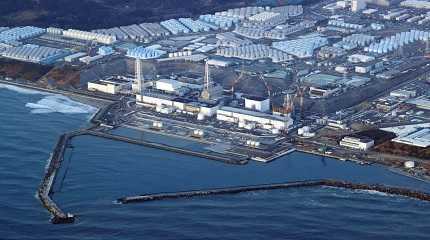
TOKYO, Aug. 24 (Xinhua) -- Japan started releasing nuclear-contaminated wastewater from the crippled Fukushima Daiichi Nuclear Power Plant into the Pacific Ocean on Thursday, despite raging opposition from both at home and abroad.
Live video provided by the plant operator Tokyo Electric Power Company (TEPCO) showed that a staff member turned on a seawater pump at around 1:00 p.m. local time (0400 GMT), marking the beginning of the controversial ocean discharge, while concerns and opposition persisting among local fishermen as well as in neighboring countries and Pacific island countries.
According to TEPCO, the radioactive wastewater has been diluted as planned before being discharged via an underwater tunnel one km from the plant.
TEPCO plans to start monitoring radioactive materials in waters near the power station on Thursday and release the data the following day at the earliest.
Hit by a magnitude-9.0 earthquake and an ensuing tsunami on March 11, 2011, the Fukushima plant suffered core meltdowns that released radiation, resulting in a level-7 nuclear accident, the highest on the International Nuclear and Radiological Event Scale.
The plant has been generating a massive amount of water tainted with radioactive substances from cooling down the nuclear fuel in the reactor buildings, which are now being stored in about 1,000 storage tanks.
The Japanese government's reckless move to release the radioactive wastewater sparked waves of anger among domestic fishermen, especially those in Fukushima.
Haruo Ono, a 71-year-old fisherman in Shinchi Town, Fukushima Prefecture, told Xinhua on Tuesday, "For us, the ocean discharge is a matter of survival. We have endured and survived these 12 or 13 years, but fishing levels have not yet returned to the level before the March 11 earthquake."
"Under such circumstances, does Fumio Kishida, as the Prime Minister of Japan, have the right to pollute our workplaces?" the man asked.
According to Ono, after the disaster, wholesalers at Tokyo's famous Tsukiji fish market were reluctant to purchase fish from Fukushima.
"Once the ocean discharge starts, we are worried about whether the fish can still be sold. Moreover, discharging nuclear-contaminated wastewater cannot be completed in a year or two. It will last for a long time," Ono added.
Meanwhile, Japan's Fisheries Agency said it will monitor concentration levels of radioactive materials in fish caught within a 10-km radius of the power plant. The first results are expected to be released on the agency's website no sooner than Saturday.
TEPCO said it plans to carry out the first round of release over 17 days to discharge 7,800 tons of the radioactive wastewater.
In the current fiscal year through next March, a total of 31,200 tons are slated for discharge, equivalent to the storage capacity of 30 tanks, TEPCO added.




